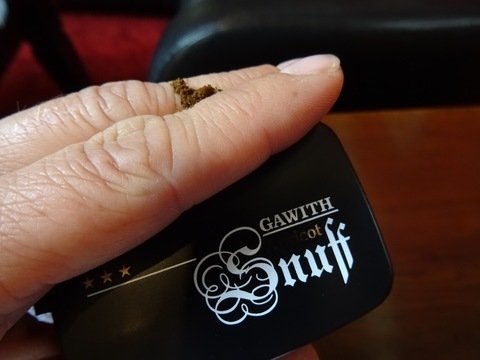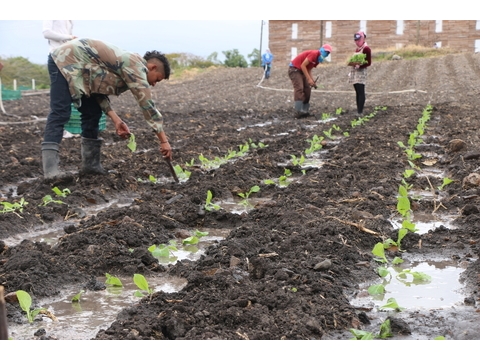Cigar Production in Cuba – Dedication to Detail
From harvest to the final rolled cigar, tobacco undergoes a lengthy process. In Cuba, each step is carried out with meticulous care and precision: specialists oversee blending, rolling, and packaging in cigar boxes. Cigar production in Cuba is elevated to an art form. Below, you’ll learn everything about each stage of the process.

The Materials Used
The quality and flavor are determined by the specific tobacco leaves selected for cigar production. The types of leaves used are:
- the outer wrapper (Capa),
- the intermediate binder (Capote), and
- the filler leaf (Tripa).
Tobacco Leaves
To achieve the desired quality of tobacco leaves, it’s essential to harvest them at just the right time (approx. 50-70 days for filler leaves and around 90 days for wrappers after sowing). A tobacco leaf can be broadly divided into three zones, each contributing different characteristics to the cigar:
- Volado (from the lower part of the plant) is milder and ensures good burn properties.
- Seco (middle leaves) carry the aroma.
- Ligero (upper leaves) provides stronger flavor.
Wrapper
The wrapper has a subtle yet decisive impact on the aroma and flavor of the cigar. The quality and type of cigar paper significantly influence the cigar’s burn rate, ideally allowing for a slow and even burn. Additionally, wrappers determine the cigar’s appearance.
Cigar Band
It is said that the cigar ring, or band (Anilla), was introduced in 1850 to prevent wealthy smokers from soiling their white gloves. This idea originated from German immigrant Gustavo (Gustav) Bock for his Bock y Compania cigar brand. Cigar bands are often made from paper or cloth, while premium cigars may feature bands of leather or gold leaf.
The Production Process: Step by Step
Cigar production is a time-intensive process involving many smaller steps, with numerous specialists involved.
Preparation of Tobacco Leaves
Once tobacco leaves arrive at the cigar factory, they are treated according to their type. Wrappers, in particular, require special attention:
- Early in the morning, wrappers are hung in special racks and moistened to give them luster and pliability.
- The Despalilladoras then remove all stems from the wrappers for further processing by removing central veins.
- Once the unwanted parts are removed, the wrappers are passed to the Rezagadoras. These factory workers sort the leaves by size, texture, and color.
- The filler leaves undergo inspection and, if necessary, are aired to remove excess moisture. They are stored in wooden barrels (known as the third fermentation) before blending.
People involved in the preparation:
- Despalilladora = Removes stem veins from wrappers
- Rezagadora = Sorts wrappers by size, texture, and color
Tobacco Selection (Leaf Selection, Blend Composition)
The Ligador (Master Blender) decides the tobacco blend. In many cigar factories, only Ligadors know the secret recipe for each cigar format.
- The Ligador arranges Volado, Seco, and Ligero to ensure consistent quality and flavor intensity in the cigars.
- Factories typically receive leaves from established suppliers. Here, Blenders (also known as Tabaquero maestro) decide which leaves make it into the blend, as they oversee ripening and select the leaves.
- Once the Ligador has prepared the blend, the cigars are passed on to the Torcedores.
People involved in tobacco selection:
- Blender (Tabaquero maestro): Oversees ripening and selects leaves for the blend
- Ligador: Knows the cigar recipe and assembles the blend
Tobacco Production
A brief look back: staying with the Blender and his work or tobacco production, the process essentially consists of four steps:
1. Harvesting
From planting the seeds to harvesting takes about seven months, with up to six harvests per season. A tobacco plant typically has 16-18 leaves, and 2-4 leaves are picked per harvest.
2. Drying
After harvest, the leaves go into a drying shed, where they lose moisture and turn brown due to oxidation. They are first sorted by size and structure, which determines whether they’ll be used as wrappers, binders, or fillers. Drying time varies and can take 30 to 90 days for natural drying.
3. Fermentation
Drying and fermentation are closely linked processes. Here, the flavor and aroma of tobacco are developed through biochemical processes that break down compounds, giving the leaves their characteristic taste.
- During the first fermentation, the leaves primarily lose resin content.
- The second fermentation reduces acid, tar, and high nicotine content.
- The leaves are then sent to cigar factories, where the third fermentation occurs, lasting up to ten years for premium cigars.
Rolling Cigars
The Torcedores receive the blend to roll the cigars at their workbench, located in the production area known as Galeras.
- First, the filler is rolled into the binder to form the bunch.
- Then, the wrapper is cut with the Chaveta, a crescent-shaped knife. The wrapper is slowly rolled over the bunch (in some factories, this task is done by specialized workers known as wrapper handlers).
- Next, the cap, which seals the wrapper at the cigar’s end, is punched from the tobacco leaf. Torcedores use a tool called the Casquillo for this.
- To bind the leaves together, the Torcedores use a vegetable adhesive from a container.
- Finally, the cigar is cut to the correct length at the foot with a guillotine.
Interesting Fact:
Traditionally, a Lector reads novels or newspapers aloud to the Torcedores as they work.
People involved in rolling cigars:
- Torcedor: Crafts the cigar by rolling the filler, binder, and wrapper.
- Wrapper handler: In some factories, a person specifically handles the wrapper.
- Lector: Reads novels or newspapers aloud during work.
Quality Assurance
Although the cigars are rolled, they’re not yet ready for sale. They undergo several checks first:
- In principle, the Jefe de Galera (production supervisor) oversees the Torcedores as they roll the cigars. In some factories, he is supported by experienced supervisors.
- The rolled cigars are sent to the Controlador, who inspects their size, weight, and structure according to regulations. He cuts cigars randomly for inspection. Each cigar is marked with the Torcedor’s employee number, linking it back to the individual worker. Their pay depends on the accepted cigars.
- Next, the Catador (or Tasador) randomly samples the cigar’s flavor. He is a taster who assesses burn, draw resistance, and aroma.
People involved in quality assurance:
- Jefe de Galera = A supervisor overseeing the Torcedores’ work
- Controlador = Inspects the quality of the rolled cigars
- Catador (or Tasador) = Samples cigars for quality
Storage and Finalization
The approved and finished cigars undergo a storage process, which further influences aroma and flavor:
- During production, cigars absorb moisture, which they must now release. For this, they’re stored in the Escaparates, a cedar wood storage room, also known as the “treasure room.”
- In storage, cigars remain for up to eight weeks at a temperature of 16 to 18 degrees, further fermenting and developing flavors.
- After storage, the Escogedores sort the cigars by color, using a color chart and selecting the cigar box. Typically, cigars are arranged from dark to light from the outside in.
- The Anilladoras affix the cigar bands to each cigar, positioning them according to the Escogedor’s guidance.
- The Encajetillador places the cigars in the cigar box (often cedar wood, to prevent drying out).
- Finally, the Fileteador attaches guarantee seals and lithography to the cigar boxes, readying them for delivery and sale.
People involved in finalizing cigars:
- Escogedor = Sorts cigars by wrapper color
- Anilladora = Affixes a band to each cigar
- Encajetillador = Responsible for placing cigars in the box
- Fileteador = Attaches guarantee seals, stamps, and lithography to boxes
Unique Characteristics in Producing Different Types of Cigars
Generally, the Ligador bears special responsibility, as the blend must meet high standards and provide a consistent flavor mix. Certain cigar formats also require special skills:
- Maduro cigars are known for their dark, highly aromatic wrappers. Here, the fermentation of wrappers demands special attention.
- Cigar formats like Torpedo (Piramide), Perfecto, or Belicoso belong to the Figurado formats, with a tapered shape. Since the size and width vary from one end to the other, precise rolling is required to keep the blend balanced.
- Smaller formats like Marevas (Petite Corona) or Panatelas require precise rolling and a careful balance to ensure an intense smoking experience despite the smaller size.
Common Issues in the Production Process
In machine-made cigar production, there is a risk of a Gold Cut. With secondary air inflow, the wrapper does not fully cover the binder, leading to uneven burning.
On the topic of draw quality: improper rolling technique or filler blend can quickly lead to poor draw. Since 2001, many factories have used a measurement device called máquina de tiro to test draw resistance before the cigar bunch is wrapped in the wrapper.






